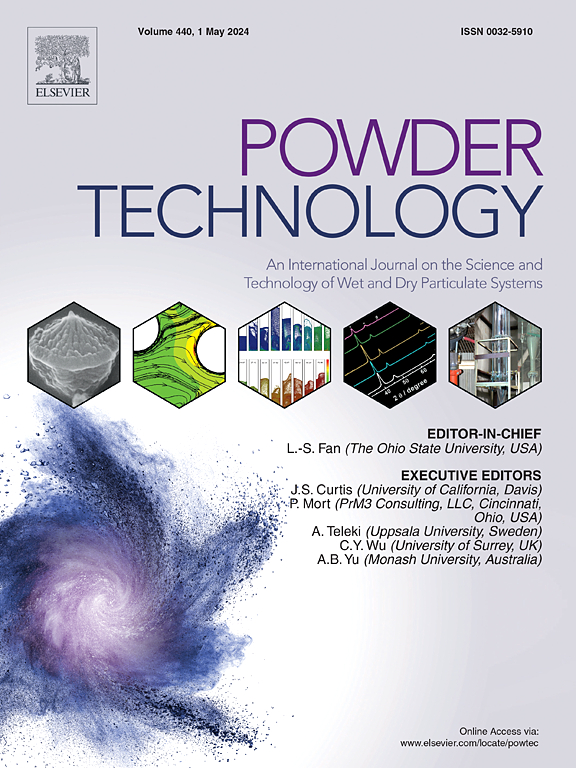Analytical solution for the polydisperse random close packing problem in 2D
IF 4.5
2区 工程技术
Q2 ENGINEERING, CHEMICAL
引用次数: 0
Abstract
An analytical theory for the random close packing density, , of polydisperse hard disks is provided using an equilibrium model of crowding (Zaccone, 2022) which has been justified on the basis of extensive numerical analysis of the maximally random jammed (MRJ) line in the phase diagram of hard spheres (Anzivino et al., 2023). The solution relies on the equations of state for the hard disk fluid and provides predictions for as a function of the ratio, , of the standard deviation of the distribution of disk diameters to its mean. For a power-law size distribution with , the theory yields , which compares well with the most recent numerical estimate based on the Monte-Carlo swap algorithms (Ghimenti et al., 2024).

二维多分散随机密堆积问题的解析解
使用拥挤平衡模型(Zaccone, 2022)提供了多分散硬盘随机紧密堆积密度(rcp)的分析理论,该理论基于对硬球体相图中最大随机堵塞(MRJ)线的广泛数值分析(Anzivino等人,2023)。该解决方案依赖于硬盘流体的状态方程,并提供了以磁盘直径分布的标准偏差与其平均值之比s为函数的预测。对于s=0.246的幂律大小分布,该理论得出的结果为:ϕRCP=0.892,与基于蒙特卡罗交换算法的最新数值估计(Ghimenti et al., 2024)相比较。
本文章由计算机程序翻译,如有差异,请以英文原文为准。
求助全文
约1分钟内获得全文
求助全文
来源期刊

Powder Technology
工程技术-工程:化工
CiteScore
9.90
自引率
15.40%
发文量
1047
审稿时长
46 days
期刊介绍:
Powder Technology is an International Journal on the Science and Technology of Wet and Dry Particulate Systems. Powder Technology publishes papers on all aspects of the formation of particles and their characterisation and on the study of systems containing particulate solids. No limitation is imposed on the size of the particles, which may range from nanometre scale, as in pigments or aerosols, to that of mined or quarried materials. The following list of topics is not intended to be comprehensive, but rather to indicate typical subjects which fall within the scope of the journal's interests:
Formation and synthesis of particles by precipitation and other methods.
Modification of particles by agglomeration, coating, comminution and attrition.
Characterisation of the size, shape, surface area, pore structure and strength of particles and agglomerates (including the origins and effects of inter particle forces).
Packing, failure, flow and permeability of assemblies of particles.
Particle-particle interactions and suspension rheology.
Handling and processing operations such as slurry flow, fluidization, pneumatic conveying.
Interactions between particles and their environment, including delivery of particulate products to the body.
Applications of particle technology in production of pharmaceuticals, chemicals, foods, pigments, structural, and functional materials and in environmental and energy related matters.
For materials-oriented contributions we are looking for articles revealing the effect of particle/powder characteristics (size, morphology and composition, in that order) on material performance or functionality and, ideally, comparison to any industrial standard.
 求助内容:
求助内容: 应助结果提醒方式:
应助结果提醒方式:


